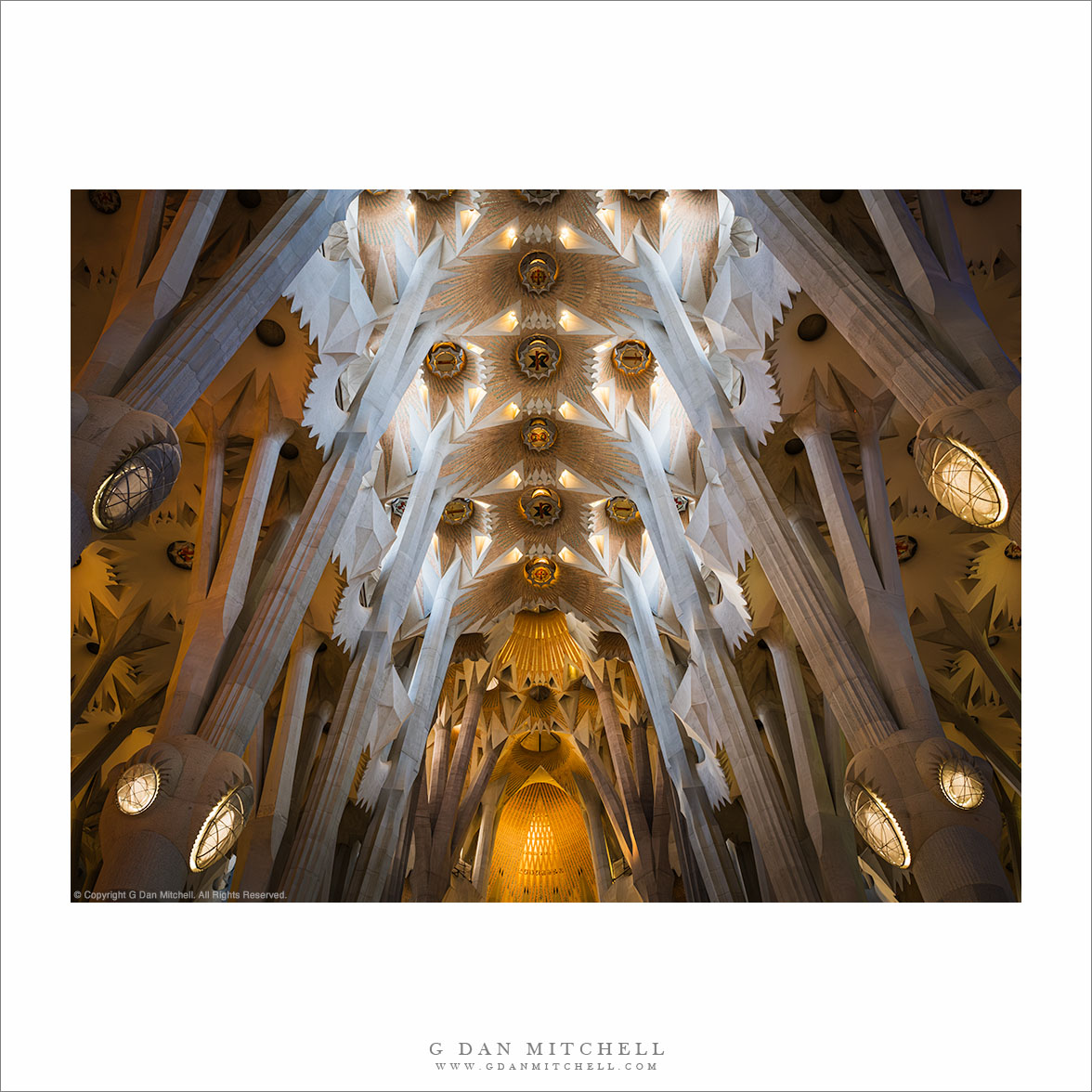
Many have seen photographs of the exterior of Barcelona’s Sagrada Família, the basilica based on Gaudi’s architectural designs. After visiting, I realized that we may be less familiar with the building’s remarkable interior — perhaps this is because it is easy to photograph the outside but much less simple to photograph inside. The scale of the interior is gigantic, with huge columns leading to a vault high above. It is very complex and busy, with details everywhere — but in some ways not like those in older cathedrals.
Many of the forms are based on organic models. (It is said that there are almost no straight lines here at all.) You can see some of them in this photograph — the columns that evoke tree trunks, the floral shapes, foliage, and more. (This wide angle view produces an additional and perhaps unintended association — the spine and rib cage.) In many places the building is full of vibrant colors from light coning through stained glass. But in this particular area, the colors are more subdued, though they span a range form the warm colors in the distance to the cool, slightly blue tones of the upper columns.
G Dan Mitchell is a California photographer and visual opportunist. His book, “California’s Fall Color: A Photographer’s Guide to Autumn in the Sierra” is available from Heyday Books, Amazon, and directly from G Dan Mitchell.
Blog | About | Instagram | Flickr | Facebook | Threads | Post | Email
Links: Articles, Sales and Licensing, my Sierra Nevada Fall Color book, Contact Info.
Scroll down to share comments or questions. (Click post title first if viewing on the home page.)
All media © Copyright G Dan Mitchell and others as indicated. Any use requires advance permission from G Dan Mitchell.


